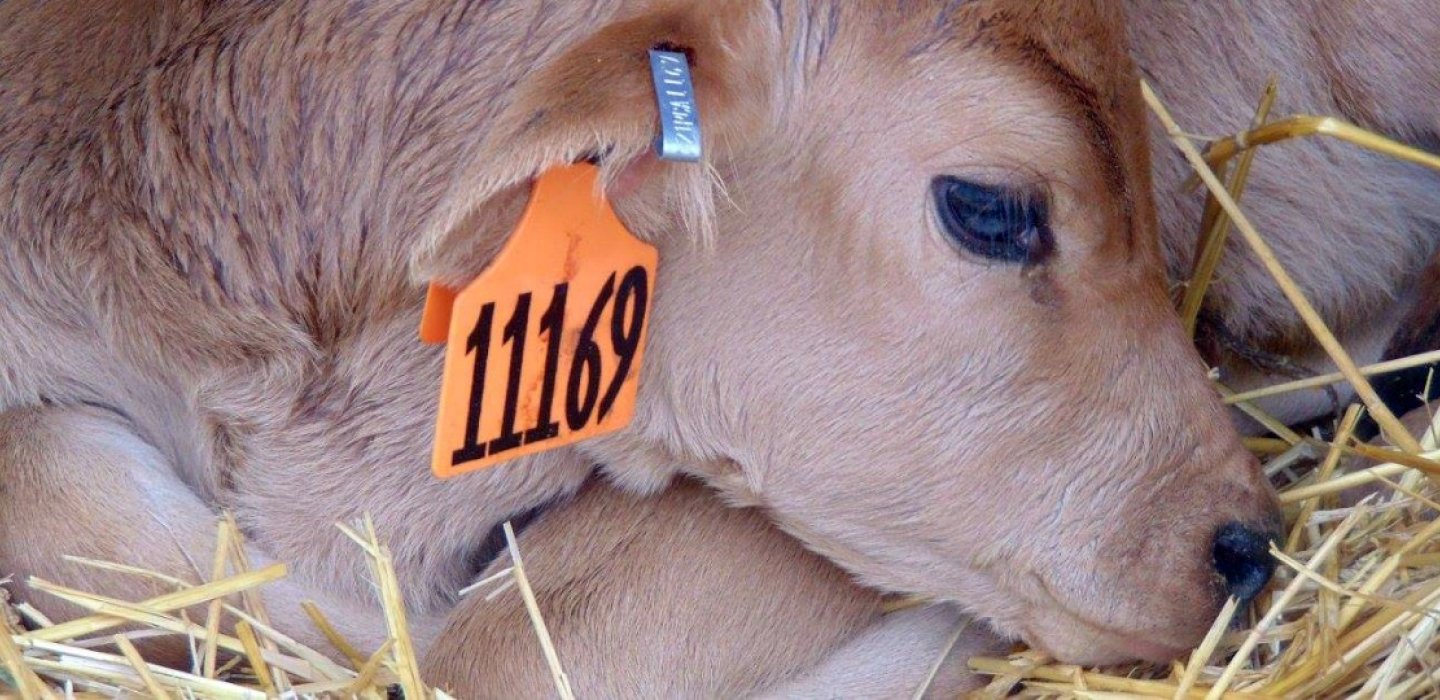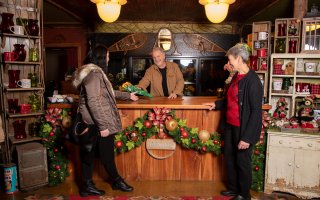
The Franklin County Fair happens each year in August, and the competitors train all year 'round. Those jams don't preserve themselves. Along with the quilts and the demolition derbies, there's the big livestock exhibitions, where farm families gather to show off their expertise.
I have come to the 1,800 cow dairy farm, Bilow Farms, LLC, to see one such operation in action. June is National Dairy Month, and there's no better place to celebrate it than in the Malone area, which has a long and rich history of dairy production. This is great training for all of us; knowing where our food comes from.
Since we all have to eat.

where comfort is king
This "Sundae on the Farm" Tour is a highly popular annual event at this multi-generational family farm. Almost half of the people showing up for the tour are children, who are enthused about baby cows and want to moo. Quite a bit.
We are guided through the farm and meet the people who work here, who wear shirts or vests bearing the Bilow Farms motto: "Where cows come first." They mean it, too. Many of the descriptions of their processes are explained by, "Because that is what cows like."
There are plenty of good seats on the wagons, pulled by tractors, which take the guests around the farm. This let us make stops throughout the widespread operation, but of course the heart of it is the cow barn. The sheer volume of the cows' feeding schedule requires volumes to be dumped into the designated area, where gates keep the cows from trampling through it. Cleanliness is very important in a dairy barn.

Most of the barn consists of open areas where the cows can move about freely. They are somewhat curious about us, but are used to people being around and soon resume feeding. Our guide laughs and says, "They sleep twelve hours a day. And the other twelve, they eat!" Our guide keeps track of all the cows, moving constantly around the barn, checking on their health and well-being. "34,000 steps a day," he says.
The cow's feed is mostly raised right on the farm. Corn, we hear, is their favorite -- and I mean the entire plant, which is just a very big stalk of grass. Then supplements are added for vitamins and fiber. This is the Concentrated Animal Feeding Operation, or CAFO. This careful balance is not only for the composition of the milk, but also their manure, which goes back into the soil to nourish the food they eat. From one end to the other, from cow to field and back again, this is a carefully monitored cycle.

We are informed that cows have four stomachs, which excites all the children. They are the rumen, the reticulum, the omasum, and the abomasum. For obvious reasons, I only remember the rumen. All of the cow's feed is designed to support the cow's nutritional needs as well as what is best for the milk they give.
"Notice the orange tag each cow wears," our guide says. "This allows us to keep precise track of their health records. But they are not numbers to us, because each cow also has a name. Some of these cows are twelve years old."
What cows like
As our wagon entered the barn, cow heads poked out through the wide gates to watch us. There were Holsteins, Guerneys, and my favorite, the Brown Swiss. (See the Brown Swiss calf -- one day old! -- at the top of the article.) This mix of different breeds creates the right mix of milk once the final product winds up in the tanks.
"I know it's a bit chilly today," our guide announced, "but this is the temperature cows like. See all those fans up above? When it's hot out, they love the shade and the coolness in the barn."

The cows are not in individual stalls, but in areas. On the opposite side of the barn are their deep sand beds, six to eight inches deep. "That sand makes it very comfortable for them," our guide said. "Like a day on the beach, the beds shift to each cow's comfort."
One section leads to the milking operation, where cows are guided in and out according to their milking schedule. They have their udders washed, stand by while the automatic milkers do their job, and then mosey back to their herd in the barn.

These cows do not get Bovine Growth Hormone (bGH) and if they need antibiotics for their health, their milk is not part of the regular shipments until the drugs clear their system.
the baby cows!
At a couple of points we are tractored by the calf section, where the Calf Manager is in constant care mode, monitoring each calf's health and happiness. Each hutch has a wired section where they can stand on bedding and get fresh air and sunshine. If they wish. On a drizzly day like this one, there are few calves poking their heads out.

When they get older, they will transition into larger groups in larger hutches, but right now keeping them separate means more intense monitoring and getting colostrum, which is the first milk produced after a birth. This has everything a baby cow needs to get a good start in life, from setting up their immune system to being easy to digest.
But near the treat tent are some special hutches, including the stars of the farm, the triplet girl calves of Reanne -- a Holstein. "Three females and all healthy! That's a one in an eight-million chance," said Andrew Bilow, the son of Vincent and Trudy, who is the point person for the latest in cow care.

Steven McDonald of Cornell Cooperative Extension has stated, "This is a tribute to the Bilow farm that they take such good care of the calves and the mother." The Bilows gave Reanne a special diet and stopped milking her for six to eight weeks prior to her delivery. "The Bilows' cow management is phenomenal. The cows are comfortable and not stressed."
Which is another thing all the cow people like to say, "Care and comfort makes for happy cows." After all, these baby calves are going to grow up and take their place in the big barn one day. But not any time soon; the triplets are still in their baby hutches even though they were born April 25. It takes a lot of growing to make an adult cow.

At the end of the tour we experience the reason for all the fuss -- some free cheese, milk, and especially, the ice cream sundaes donated by local ice cream store, Stewart's. It takes three princesses and four members of their court to make me a caramel sundae with crushed candy bars on top.
Because there's no such thing as too much fussing when it comes to our dairy treats.
Find some comfy lodging. Experience our dining. Check our upcoming events calendar!
Some photos courtesy Bilow Farms, LLC.
This week in related ADK training news:
Training the chords
Try mini-tri
Plant your seed
What goes up...
Scenic training
All in a day's paddle
Start 'em young






Comments
Add new comment